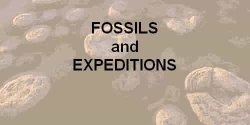Kronosaurus Queenslandicus
Kronosaurus Queenslandicus
Australia's Marine Giant
Family Dolichorhynchopidae, Welles

The pliosaurs were related to the plesiosaurs but highly distinct in their morphology. As plesiosaurs tended toward long necks and small heads, a diet of fish and a physiology adapted to short bursts of high speed, so the pliosaurs were the exact inverse.
They developed massive heads on short, stout necks, often specialised in cephalopod prey, and were adapted to long periods of fast cruising. The taxonomic structuring of the Mesozoic marine reptiles is long overdue for thorough comparative review, and this work is under way in some localities. Presently, Kronosaurus is placed with Dr Sam Welles' 1962 diagnosis of the Family Dolichorhynchopidae.
Kronosaurus queenslandicus was named in 1901 from a fragment of jaw with six embedded teeth found near Hughenden, Queensland, Australia, by A Crombie in 1899. It was described by Dr Longman, then Director of the Australian Museum, who assessed it as an ichthyosaur, but following the discovery of other fragments he corrected his diagnosis in 1924.
The most famous specimen was found in the limestone country north of Richmond and was excavated in 1931-32 by an expedition from Harvard University's Museum of Comparative Zoology. It was shipped to the United States for three years of preparative work, and despite the name of the institution no comparison was ever made between the giant display-quality specimen and the type materials. For this reason the ascription must be viewed as tentative, and a new generic name may one day have to be found.
Kronosaurus as mounted at the HMCZ measures 42'/12.8m and is probably the most massive marine reptile that ever lived. The head alone measures 9'/2.7m, fully a quarter of the body. The skeleton was almost complete, missing parts of the forepaddles and probably the end of the tail. These were reconstructed and the display is a little misleading in that knowledge of the animal seems more complete than it really is.
The specimen was removed from Australia without licence, and without Australian scientists or institutions being involved, a situation the local scientific community has never been happy about. If further specimens come to light they will definitely remain in the country.
The animal has been assessed by the rounded teeth at the back of the jaws to belong to the 'crush-guild,' a predator on the plentiful shoals of ammonites that swarmed in the shallow epicontinental sea that had transgressed much of north-eastern Australia in the Early Cretaceous, sharing this biozone with elasmosaurs and ichthyosaurs.

